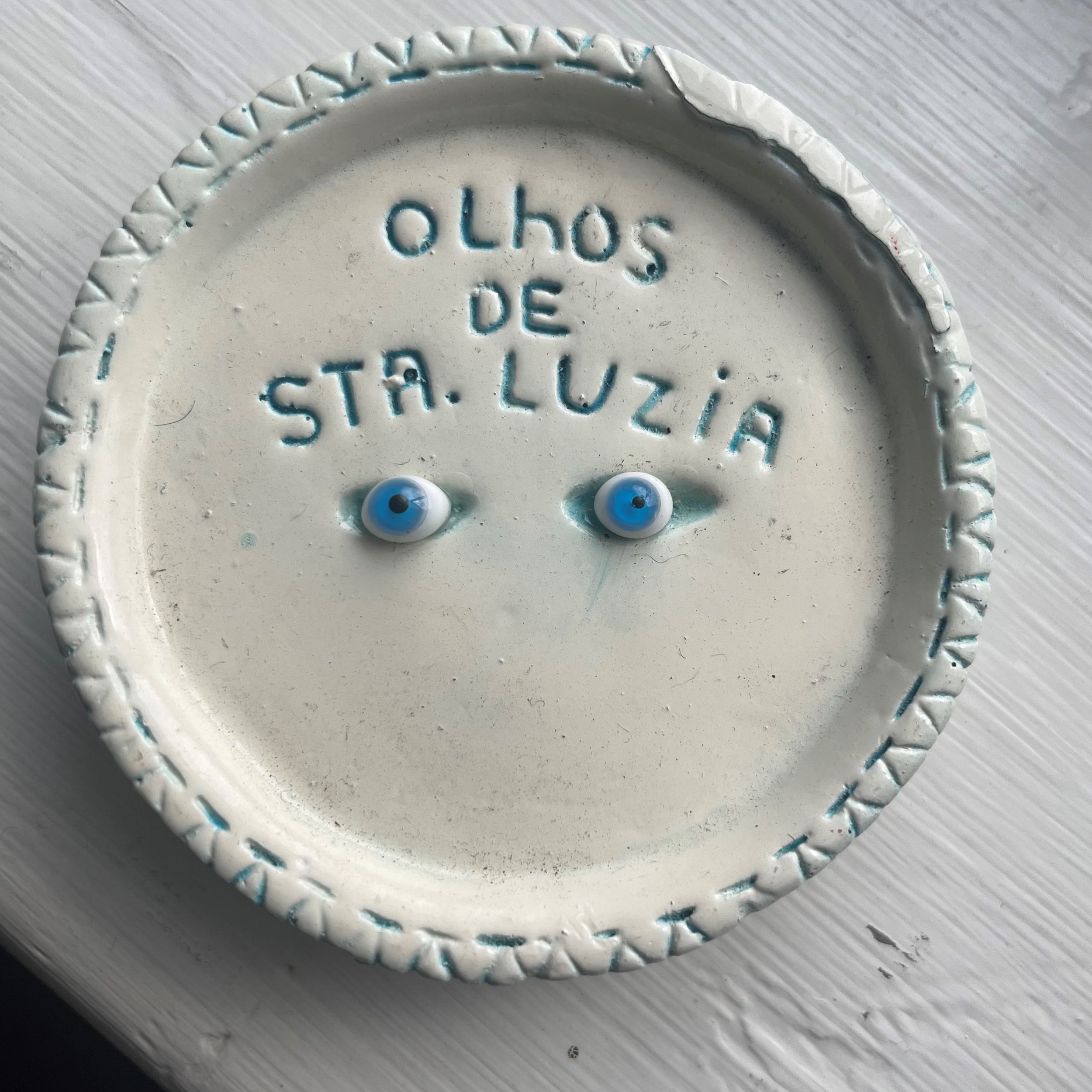St. Lucy in the Sky (with Eyeballs)
St. Lucy (aka Santa Lucia) is one of the three great “girl saints,” along with Saints Catherine and Barbara. Relatively little is known about her life, but we do know that she was a Christian girl who lived in pagan Sicily in the 3rd century. She took a vow of virginity, and after spurning a suitor’s advances, she died a martyr. Her body now rests in Venice. Because her name is derivative of “Lux,” the Latin word for “light,” she became the patron saint of the lights of the body — the eyes — and is invoked for protection against blindness and all other diseases of the eye. (She is also the patron saint of gondoliers, architects, miners and sudden death and the city of Siracusa, among other things).
But there is another important association between Santa Lucia and light. Prior to the adoption of the Julian calendar, her feast day fell on the Winter Solstice, the shortest day of the year, when many ancient rituals celebrated the gradual return of light to break the long winter darkness. For this reason, Saint Lucy was extremely popular in Northern Europe — particularly in Scandinavia, where the dark winter nights were longest.
In modern times, St. Lucy’s feast day falls on December 13, and it is still customary for young Swedish girls in white dresses (representing Saint Lucy) to place a wreath of burning candles on their heads and awaken their families with saffron-flavored pastries called Lussekatter. Another popular custom on the eve of the feast day was for children to write “Lussi” on doors, fences and walls and draw a female figure, representing the Saint. The purpose of this practice was to announce to the demons of winter that their reign was over; the sun would return; and the days would start getting longer from this point on. People would also bask in the smoke of bonfires as protection against disease, witchcraft and other dangers.
Now, faithful readers, let’s address one of the more peculiar aspects of St. Lucy imagery: she is usually depicted holding her own eyeballs on a plate because, according to legend and depending on which version you believe, either she or her persecutors plucked out her eyes before she died. Sometimes she is also depicted with a sword sticking out of her neck, as this was her ultimate cause of death. (Roman Catholics are not known for subtlety.)
Saint Lucy with a sword sticking out of her neck, holding a flaming plate of eyeballs
The eyes of Sta. Luzia, object of devotion, Brazil, House of Good Fortune collection.
Let’s try to unpack this, starting with Matthew 6:22-23: “The eye is the lamp of the body. If your eyes are good, your whole body will be full of light.” Here we see the explicit association between light and sight — although in this case, the eye is associated with inner light, a “lamp from within”. This verse has been used in support of the idea that a person who possesses good qualities has “good eyes.” The corollary is, of course, that a person with bad qualities has bad eyes, or “evil eyes.”
Faithful readers will recall that the concept of the evil eye is rooted in the sin of envy , certainly not a good quality. The idea is that the envious are, in effect, blinded by their own feelings of covetous and resentment. So if you are blinded by envy, you do not have “good eyes,” and therefore no “lamp from within.”
And what is the cure for envy, according to Dante? BLINDNESS (In Purgatorio, the envious had their eyes sewn shut with iron wire “to prevent them from seeing and envying the good fortune of others.”)
And what is Saint Lucy the patron Saint of? BLINDNESS.
And if you are blind, what does your world consist of? DARKNESS
And who brings light to darkness? ST. LUCY
And what does St. Lucy hold on a plate? her EYES
And what happens if your eyes are good? YOUR WHOLE BODY WILL BE FULL OF LIGHT
OK. Are you with me?
Now let’s go back to the Bible. In the Gospel of Thomas, there is a maxim that reads: “There is a light within a man of light and he enlightens the whole world. If he does not shine, there is darkness.”
Darkness… like the long, dark winter nights.
And who brings light to darkness in mid-Winter? ST. LUCY
And where does her inner light come from? HER EYES
And what is one of the oldest symbols of protection against the evil eye? an EYE
And so, here we are back at the beginning — Saint Lucy, with her good eyeballs literally enlightening the world and driving away evil.
St. Lucy holding a pair of eyeballs and a palm, the symbol of a martyr’s victory over evil
Detail from Saint Lucy by Francesco del Cossa
Etching of Santa Liucia, Virgin & Martyr, from the collection of the British Museum.
Portrait of St. Lucy, 18th Century, Probably Peruvian, from the collection of the Metropolitan Museum of Art
Further Reading:
The House recommends Radici Siciliane’s excellent blog post on St. Lucy and her significance in the Sicilian tradition.
Sources:
FENSHAM, F. C. “THE GOOD AND EVIL EYE IN THE SERMON ON THE MOUNT.” Neotestamentica, vol. 1, New Testament Society of Southern Africa, 1967, pp. 51–58, http://www.jstor.org/stable/43048835.
Cassell, Anthony K. “Santa Lucia as Patroness of Sight: Hagiography, Iconography, and Dante.” Dante Studies, with the Annual Report of the Dante Society, no. 109, Johns Hopkins University Press, 1991, pp. 71–88, http://www.jstor.org/stable/40166438.
Weiser, Francis X. “The Holyday Book: The Story of the Observance in Liturgy and Folklore of the Pentecost Season and the Feasts of Saints Throughout the Year, 1956, pp. 197-200.












